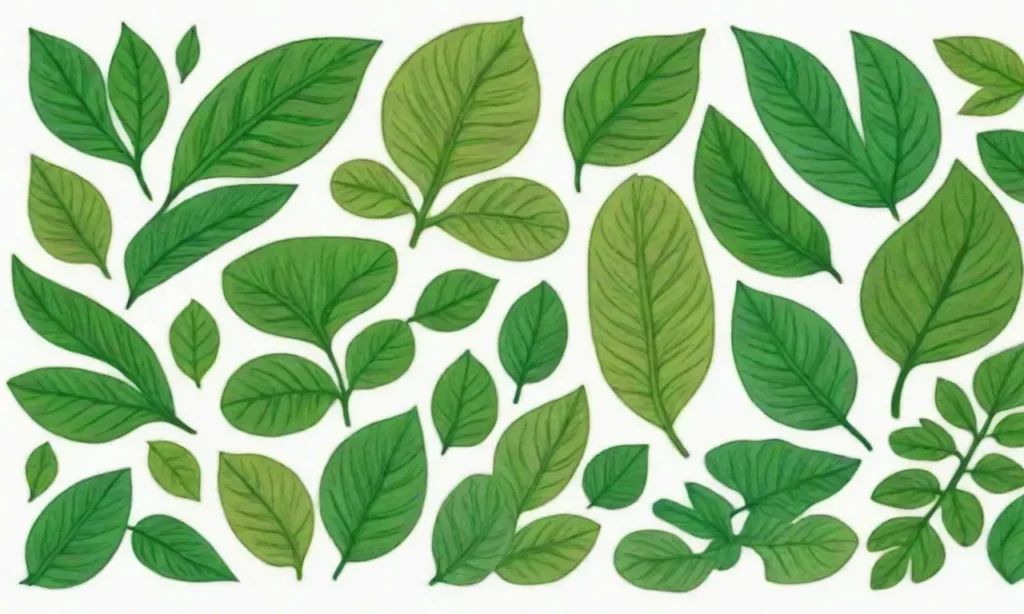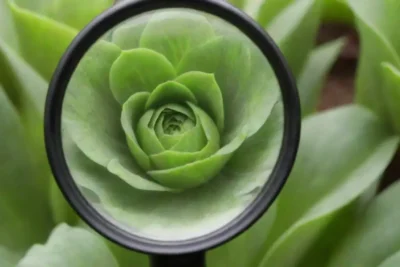
Medicinal Succulents: An Ancient Tradition for Modern Users

Introduction
Throughout history, various cultures across the globe have relied on the natural world to provide remedies for a multitude of ailments. One such category of plants that have been appreciated for their healing properties are succulents. These remarkable plants are not only known for their aesthetic appeal but also for their medicinal capabilities, forming a deep-rooted tradition that spans centuries. Their ability to retain water and thrive in arid conditions has allowed them to flourish in diverse climates, making them accessible for traditional healing practices.
In this article, we will delve into the fascinating world of medicinal succulents, exploring their historical significance, the scientific basis behind their medicinal uses, and how they can be integrated into modern healthcare practices. We'll examine specific types of succulents that have been used for therapeutic purposes, and how today’s wellness enthusiasts can harness their benefits. Join us on this journey to uncover the ancient traditions that continue to inspire modern users today.
The Historical Significance of Medicinal Succulents
The utilization of succulents for medicinal purposes can be traced back to ancient civilizations. Various cultures, including the Egyptians, Greeks, and Indigenous peoples, turned to these hardy plants for remedies due to their rich stores of nutrients and bioactive compounds. For instance, the Aloe vera plant has been revered since ancient Egypt, where it was depicted in hieroglyphics and used in the embalming process by ancient Egyptians for its healing properties. Its gel has a history of being used to treat wounds, sunburns, and various skin disorders, categorizing it as the “plant of immortality.”
Similarly, other cultures have integrated succulents into their healing practices. In traditional Chinese medicine, succulents such as Sedum species have been used to treat respiratory issues and digestive disorders. Native Americans considered succulents like Agave not only as a food source but also employed them in various forms—juices, poultices, and milks—for internal and external healing. This highlights the universal appreciation for the medicinal qualities of succulents across different traditions.
As the world became more interconnected, the exchange of knowledge related to these plants continued to flourish. Succulents were not only valued locally but also became crucial to trade routes, enriching cultural practices. The knowledge surrounding the medicinal uses of succulents has been passed down through generations, laying the foundation for contemporary herbalism and natural remedies.
Modern Research and Scientific Validations
Despite their longstanding historical significance, the need for scientific validation of traditional medicine practices has increased in recent years. Modern scientific research has begun to confirm many of the folkloric benefits attributed to succulents. Studies have demonstrated that several of these plants contain compounds with antioxidant, anti-inflammatory, and antimicrobial properties, which can play a crucial role in supporting health.
Aloe vera, for example, is now widely researched for its various health benefits. Scientific investigations have shown that its gel contains compounds such as anthraquinones, which possess potent antimicrobial activities and may assist in wound healing. The plant's polysaccharides have also been used in the development of skin care products for their moisturizing and anti-aging properties, which supports its historical use.
 Exploring the Connection Between Succulents and Stress Relief
Exploring the Connection Between Succulents and Stress ReliefAnother example is the Haworthia, a succulent praised for its broad range of health benefits. Recent studies have highlighted its potential anti-inflammatory properties that are beneficial for skin conditions such as eczema and psoriasis. This has led to an increased interest in natural remedies among dermatologists and skincare professionals who seek alternatives to conventional pharmaceutical treatments.
Furthermore, the use of succulents extends beyond topical applications to their potential internal benefits. Various succulents are being examined for their capability to assist in digestion or act as natural stimulants for metabolism. For instance, Agave species are rich in inulin, a type of soluble fiber that can promote gut health. The modern approach to understanding how these plants work at a biochemical level can help integrate their use into mainstream medicine and provide consumers with safer, plant-based alternatives.
Key Medicinal Succulents and Their Uses

While numerous succulents possess medicinal properties, some of the most notable ones include Aloe vera, Agave, Kalanchoe, and Echeveria. Each of these plants has unique attributes that contribute to their therapeutic potential.
Aloe Vera
As one of the most widely recognized medicinal succulents, Aloe vera boasts a plethora of benefits. Its gel is rich in vitamins, enzymes, and monosaccharides, making it effective for treating burns, minor wounds, and skin irritations. In addition to topical applications, Aloe vera juice is often consumed for digestive health, detoxification, and hydration. Many wellness enthusiasts cherish it for its laxative properties and its ability to aid in weight management.
Moreover, Aloe vera has been explored in various studies for its potential effects on blood sugar levels, suggesting that it may be beneficial for individuals with diabetes. Its anti-inflammatory properties have also attracted attention for use in complex therapeutic decisions, making it a focal point in natural health discussions today.
Kalanchoe
Another noteworthy succulent with medicinal potential is Kalanchoe. This plant has been utilized in traditional medicine for its anti-inflammatory and analgesic properties. Kalanchoe's leaf extracts are often used for treating cuts and wounds due to their ability to promote healing and reduce inflammation.
 Sedum: The Versatile Succulent You Didn't Know Was Medicinal
Sedum: The Versatile Succulent You Didn't Know Was MedicinalFurthermore, studies have indicated that certain Kalanchoe species may have beneficial compounds that assist with respiratory health. In traditional practices, infusions made from these plants have been used to alleviate coughs and colds, showcasing their versatile applications.
Agave
Agave, known for its use in tequila production, is also recognized for its medicinal benefits. Traditionally, Agave has been used to promote gut health and stimulate digestive function. The sap of Agave is known to have prebiotic properties that can contribute to a healthy microbiome.
Additionally, Agave’s application in skincare shouldn’t be overlooked. Extracts from the Agave plant are increasingly incorporated into natural cosmetics for their moisturizing and skin-tightening qualities. As consumers become more conscious of the ingredients in their beauty products, the incorporation of succulents like Agave presents valuable opportunities for both beauty and wellness industries.
Practical Applications for Modern Users
Incorporating medicinal succulents into daily life can be a rewarding experience that connects users to ancient practices. Here are some practical applications for modern individuals looking to utilize these plants:
Home Remedies
Creating simple home remedies using succulents can be a great way to engage with their medicinal benefits. For instance, fresh Aloe vera gel can be harvested and applied directly to minor cuts, sunburns, or insect bites to provide immediate relief. Similarly, Kalanchoe leaves can be crushed and used as a poultice on wounds to promote healing.
Culinary Uses
Certain succulents, such as Agave and some Sedum varieties, can even be incorporated into culinary practices. Agave syrup and nectar, derived from the plant’s sap, serve as natural sweeteners and are often favored by individuals looking for alternatives to refined sugars. Furthermore, some succulent greens can add unique flavors and textures to salads or smoothies, enriching one’s diet naturally.
Health and Wellness Products
With the rise of the wellness industry, many companies are now producing products that feature medicinal succulents as primary ingredients. From skincare solutions enriched with Aloe vera to health supplements infused with Agave extracts, modern users have access to a variety of wellness products. Understanding the constituents and benefits of these products enables consumers to make informed choices when selecting natural remedies that resonate with their health goals.
 Should You Use Aloe in Your Next Health Potion? An Analysis
Should You Use Aloe in Your Next Health Potion? An AnalysisConclusion
As we have explored, the remarkable journey of medicinal succulents spans thousands of years, intersecting ancient traditions with modern innovations. These plants are not merely decorative; their rich healing properties have earned them a special place in both history and contemporary wellness practices. The dual appreciation of succulents—to marvel at their beauty as well as to rely on them for health—is a timeless relationship that invites exploration.
The growing interest in herbal remedies and natural treatments aligns with contemporary issues concerning pharmaceuticals and the quest for alternative therapies. As we continue to validate the age-old practices associated with succulents through scientific studies, we should also embrace the ancient wisdom preserved in diverse cultures. By integrating these plants into our daily lives, we not only honor traditions but open gateways to holistic health and wellness.
Embracing medicinal succulents today means fostering connections to the past while innovating pathways for sustainable health. So whether you are a seasoned herbalist, a curious gardener, or someone just exploring the benefits of succulents, consider weaving these magnificent plants into your life—an act that celebrates both nature's bounty and an enduring legacy of healing.
If you want to read more articles similar to Medicinal Succulents: An Ancient Tradition for Modern Users, you can visit the Medicinal Uses category.






You Must Read